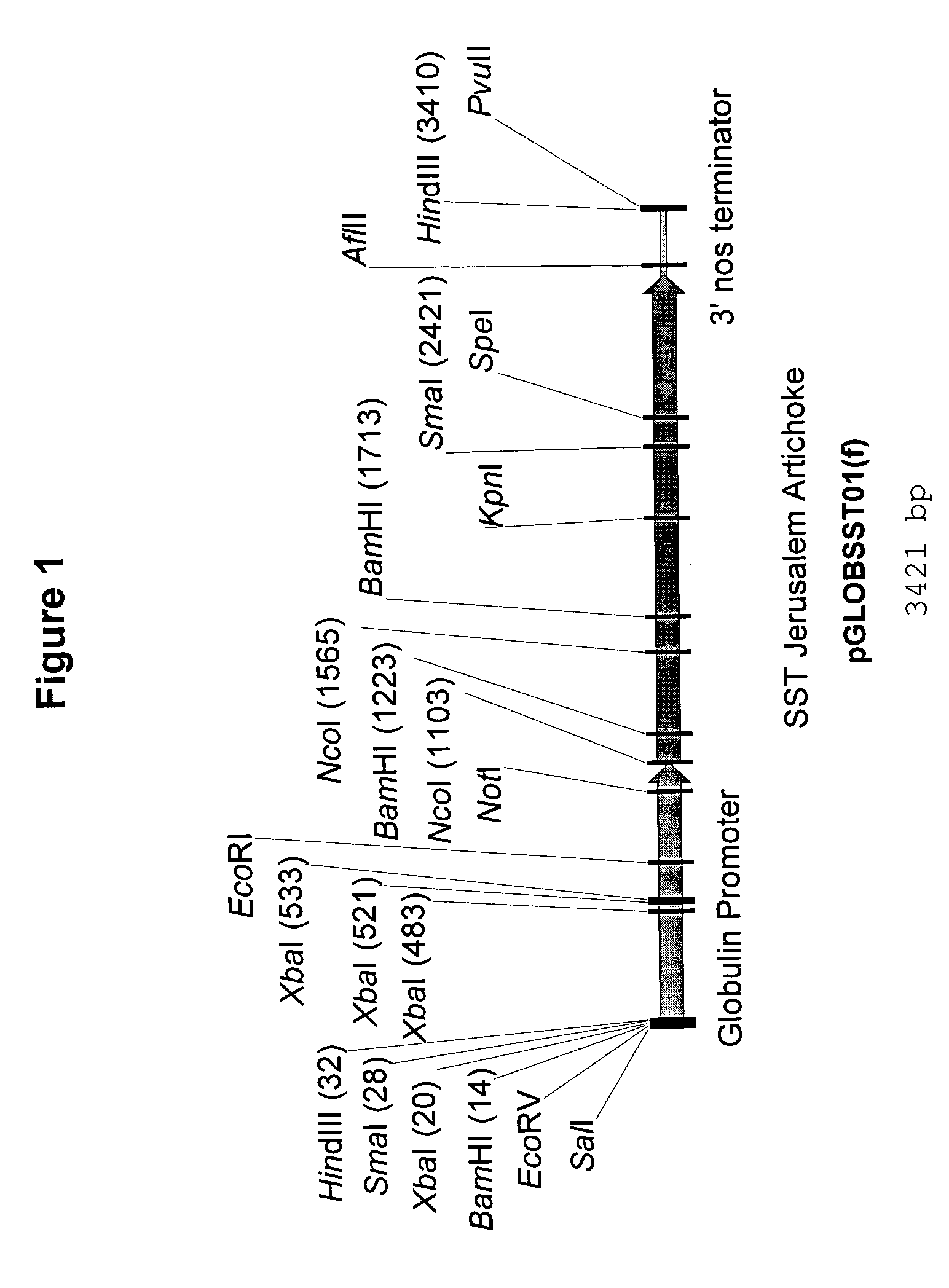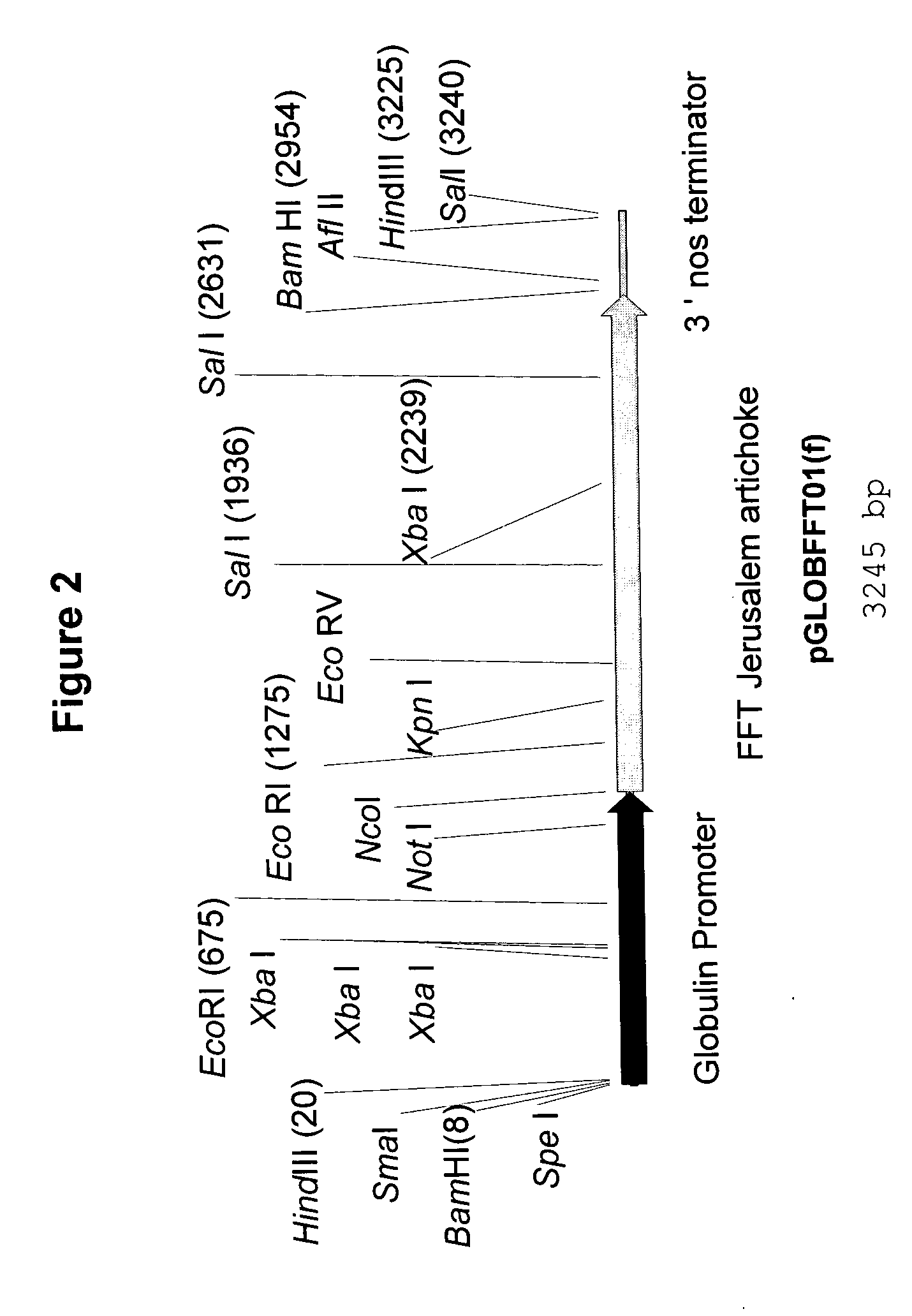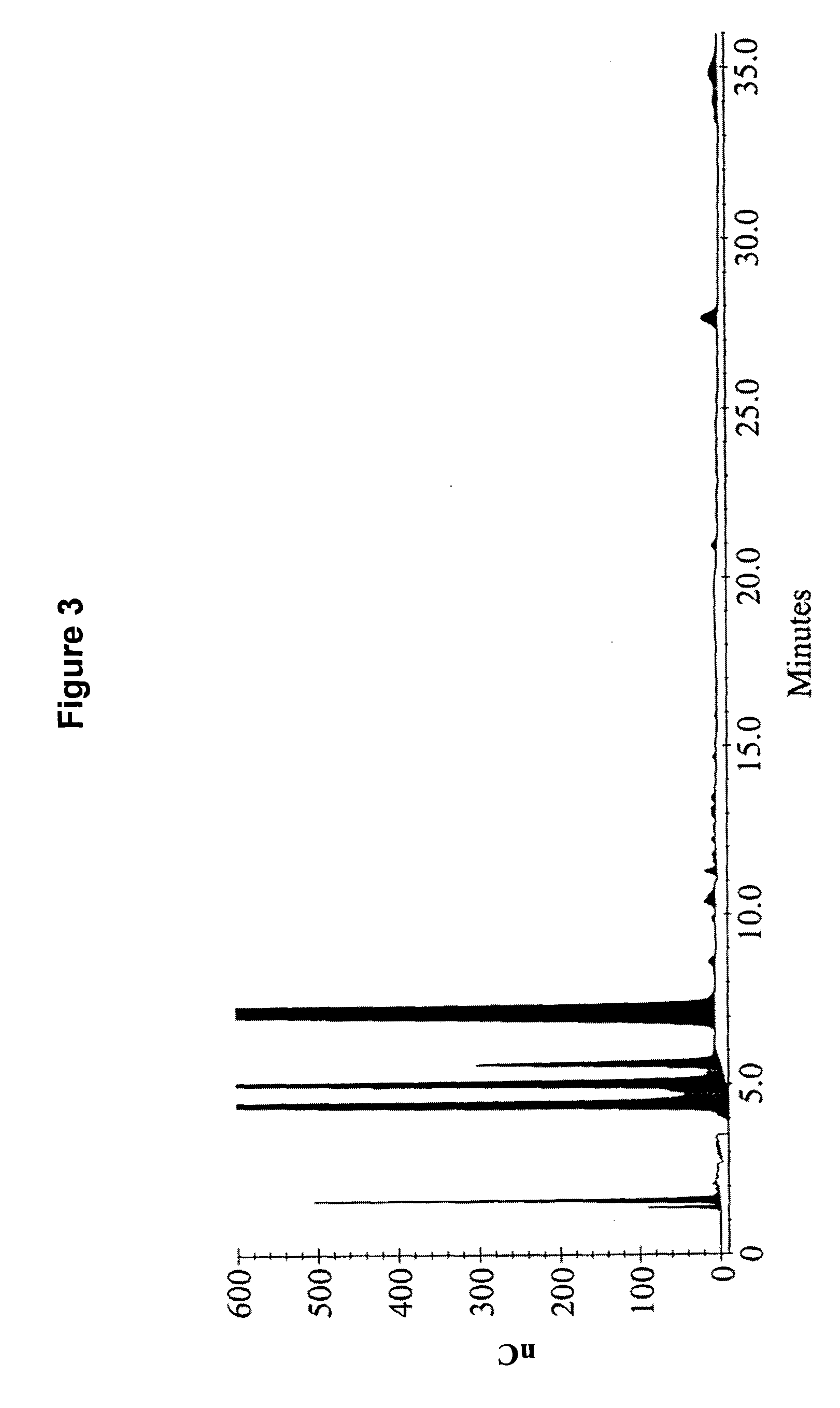Product of novel fructose polymers in embryos of transgenic plants
a technology of transgenic plants and fructose, which is applied in the direction of transferases, sugar derivates, enzymology, etc., can solve the problems of bacterial ftfs, reduced quality loss, and inability to implement programs of this type, and achieves low caloric value, good solubility, and is suitable for diabetics.
- Summary
- Abstract
- Description
- Claims
- Application Information
AI Technical Summary
Benefits of technology
Problems solved by technology
Method used
Image
Examples
example 1
Method For Early Screening of Embryo-Targeted Traits in Transgenic Maize
[0123] A method for early screening of embryo-targeted traits in transgenic maize using transgenic somatic embryos was developed. The method consists of:
[0124] 1) preparing Type-II maize callus for transformation,
[0125] 2) transforming callus using the particle bombardment technique,
[0126] 3) selecting transgenic callus lines,
[0127] 4) regenerating transgenic somatic embryos,
[0128] 5) propagating transgenic somatic embryos for early trait analyses and plant production, and.
[0129] 6) analyzing somatic embryos for phenotypic trait.
[0130] 1. Preparation of Callus for Transformation
[0131] A rapidly growing Type-II maize callus is transferred to #4 Whatman filter paper placed on a modified Chu (N6) callus maintenance medium (Chu, C. C., et al. (1975) Scientia Sinic. 18:659). The callus is spread in a thin layer covering the filter paper in a circular area of approximately 4 cm in diameter, the filter paper is transfe...
example 2
Construction of a Cassette for Embryo-Targeted Expression of Jerusalem Artichoke SST in Transgenic Zea mays L.
[0147] A cassette designed for the embryo-specific expression in maize of the Jerusalem artichoke sucrose:sucrose fructosyltransferase (SST) was assembled. This cassette, GLOBSST01(f) is shown in FIG. 1 contains a maize embryo-specific globulin promoter directing translation of the entire Jerusalem artichoke SST coding region followed by a 3' nos termination signal.
[0148] The GLOBSST01(f) cassette was assembled into plasmid vector pGLOBSST01 by replacing the maize endosperm-specific 10 kD zein promoter in plasmid 10 kD-SST-17 with the maize embryo-specific globulin promoter. Plasmid 10 kD-SST-17 (described in PCT publication No. WO99 / 46395, published Sep. 16, 1999) contains the 10 kD zein promoter directing the expression of the Jerusalem artichoke SST, including native and secretory vacuolar signals. To assemble plasmid 10 kD-SST-17 an intermediary plasmid was assembled by ...
example 3
Construction of a Cassette for Embryo-Targeted Expression of Jerusalem Artichoke FFT in Transgenic Zea mays L.
[0150] A cassette designed for the embryo-specific expression in maize of the Jerusalem artichoke fructan:fructan fructosyltransferase (FFT) was assembled. This cassette, GLOBFFT01(f), contains a maize embryo-specific globulin promoter directing translation of the entire Jerusalem artichoke FFT coding region followed by a 3' nos termination signal.
[0151] The GLOBFFT01(f) cassette was assembled into plasmid pGLOBFFT01 by replacing the maize endosperm-specific 10 kD zein promoter in plasmid 10 kD-FFT-17 with the maize embryo-specific globulin promoter. Plasmid 10 kD-FFT-17 (described in PCT publication No. WO99 / 46395, published Sep. 16, 1999) contains the 10 kD zein promoter directing the expression of the Jerusalem artichoke FFT, including native and secretory vacuolar signals. To assemble plasmid 10 kD-FFT-17 an intermediary plasmid was constructed by removing the polynucleo...
PUM
| Property | Measurement | Unit |
|---|---|---|
| Volume | aaaaa | aaaaa |
| Fraction | aaaaa | aaaaa |
| Degree of polymerization | aaaaa | aaaaa |
Abstract
Description
Claims
Application Information
 Login to View More
Login to View More - R&D
- Intellectual Property
- Life Sciences
- Materials
- Tech Scout
- Unparalleled Data Quality
- Higher Quality Content
- 60% Fewer Hallucinations
Browse by: Latest US Patents, China's latest patents, Technical Efficacy Thesaurus, Application Domain, Technology Topic, Popular Technical Reports.
© 2025 PatSnap. All rights reserved.Legal|Privacy policy|Modern Slavery Act Transparency Statement|Sitemap|About US| Contact US: help@patsnap.com



